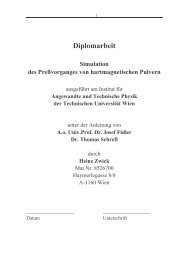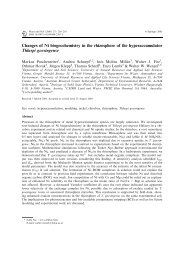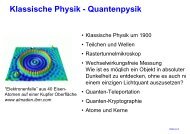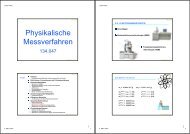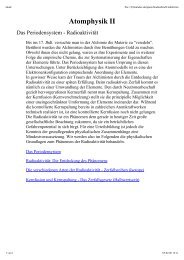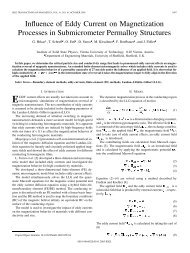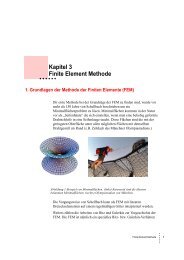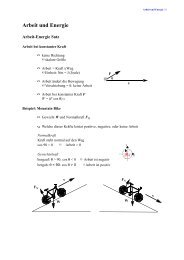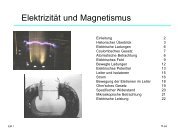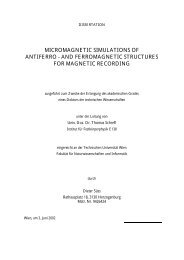Read Back Signals in Magnetic Recording - Research Group Fidler
Read Back Signals in Magnetic Recording - Research Group Fidler
Read Back Signals in Magnetic Recording - Research Group Fidler
Create successful ePaper yourself
Turn your PDF publications into a flip-book with our unique Google optimized e-Paper software.
Numerical Methods<br />
ϕ ( x ) =δ . (4.8)<br />
i j ij<br />
Each basis function ϕ i refers to the i-th node of the tetrahedral mesh. Figure 4.1 shows such<br />
functions for a 2-dimensional mesh, which are also called “hat functions” due to their<br />
appearance.<br />
Figure 4.1: Typical basis functions of two neighbor<strong>in</strong>g nodes of a 2-dimensional mesh.<br />
For our simulations we need to solve Laplace and Poisson equations of the form<br />
( )<br />
∇ σ() r ∇ u() r = s()<br />
r . (4.9)<br />
Here s( r ) is the source term, which vanishes <strong>in</strong> case of a Laplace equation. The additional<br />
factor σ( r ) also <strong>in</strong>cludes the generalized Laplace equation for <strong>in</strong>homogeneous conductors<br />
(see (2.31)). Now we apply the Galerk<strong>in</strong> Method, which leads to<br />
( ( ) )<br />
∫ ∇ σ() r ∇u() r −s() r ϕ i () r dV = 0,<br />
(4.10)<br />
V<br />
Partial <strong>in</strong>tegration yields<br />
∫ ∫ ∫<br />
σ() r ∇u() r ∇ϕ i() r dV = � σ() r ∇u() r ϕi() r dA− s() r ϕi()<br />
r dV . (4.11)<br />
V ∂V<br />
V<br />
We take <strong>in</strong>to account that the solution u is a l<strong>in</strong>ear comb<strong>in</strong>ation of all basis functions ϕ i :<br />
N<br />
∑ ∫ ∫ ∫<br />
u σ() r ∇ϕ () r ∇ϕ () r dV = � σ() r ∇u() r ϕ () r dA− s() r ϕ () r dV . (4.12)<br />
j j i i i<br />
j= 1 V ∂V<br />
V<br />
With the def<strong>in</strong>itions<br />
43



